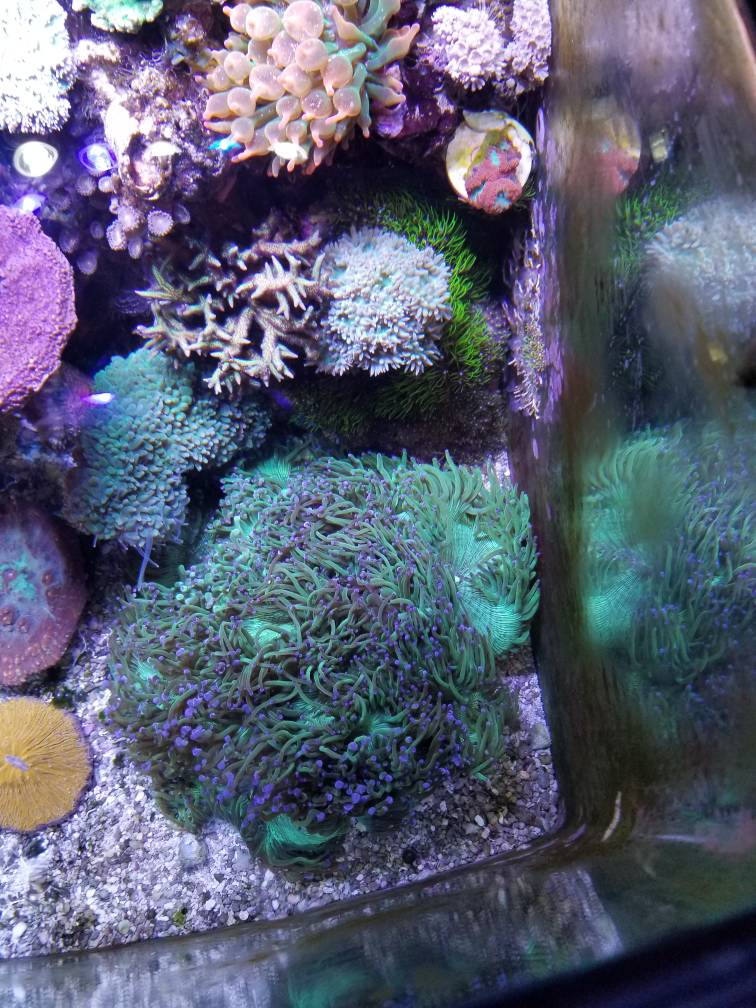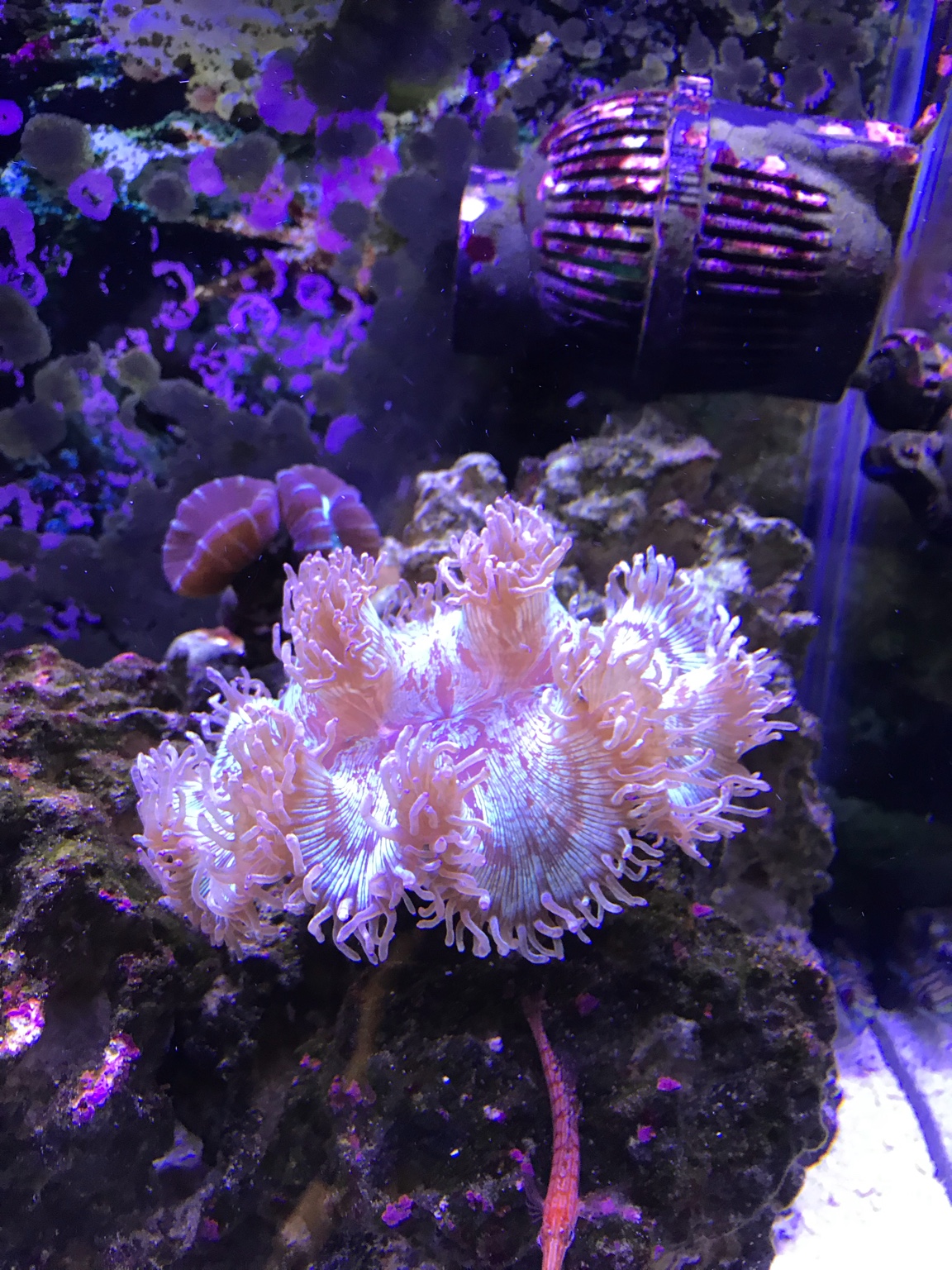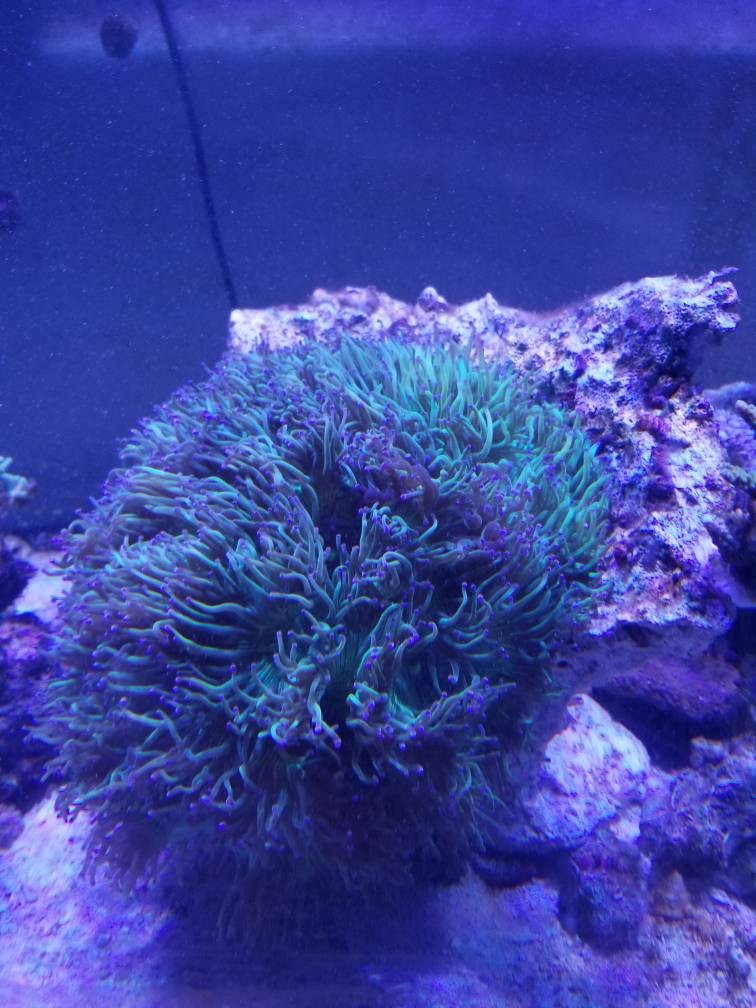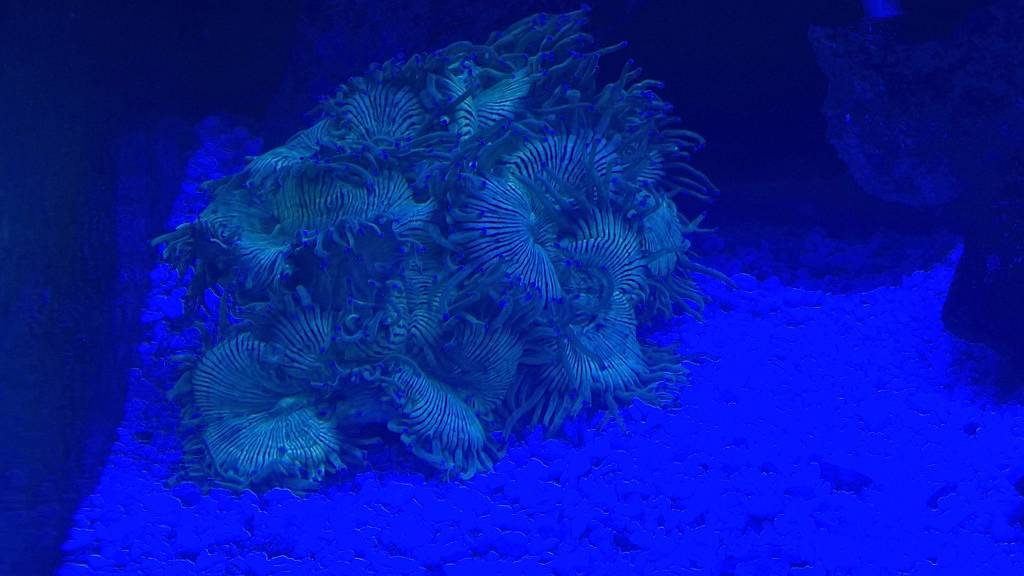I have seen a bunch of different pictures of Elegance corals and there appears to be quite a range of what is considered a healthy looking coral.
Some have tentacles that are super long and flowing while others are shorter. I am trying to gauge the health of one purely by look and comparison to existing images and posts. Should it always have super extended tentacles? What's the best way to gage the health of this coral?
I am fairly certain it is an Australian due to the shape of the skeleton. It is more of a wall shape than cone. At least that's what I found in a search here.
This is what it looks like most of the day. However, it will start to close up earlier than the other inhabitants of the tank like torch, zoas and duncan. It opens a bit earlier that the others as well. Basically, is tentacle length a sign of health or lighting or flow?
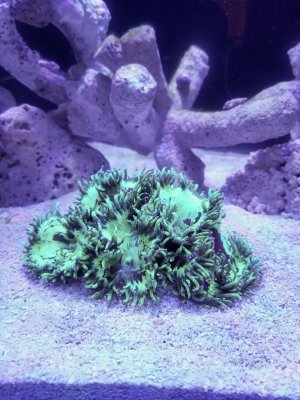
Some have tentacles that are super long and flowing while others are shorter. I am trying to gauge the health of one purely by look and comparison to existing images and posts. Should it always have super extended tentacles? What's the best way to gage the health of this coral?
I am fairly certain it is an Australian due to the shape of the skeleton. It is more of a wall shape than cone. At least that's what I found in a search here.
This is what it looks like most of the day. However, it will start to close up earlier than the other inhabitants of the tank like torch, zoas and duncan. It opens a bit earlier that the others as well. Basically, is tentacle length a sign of health or lighting or flow?





